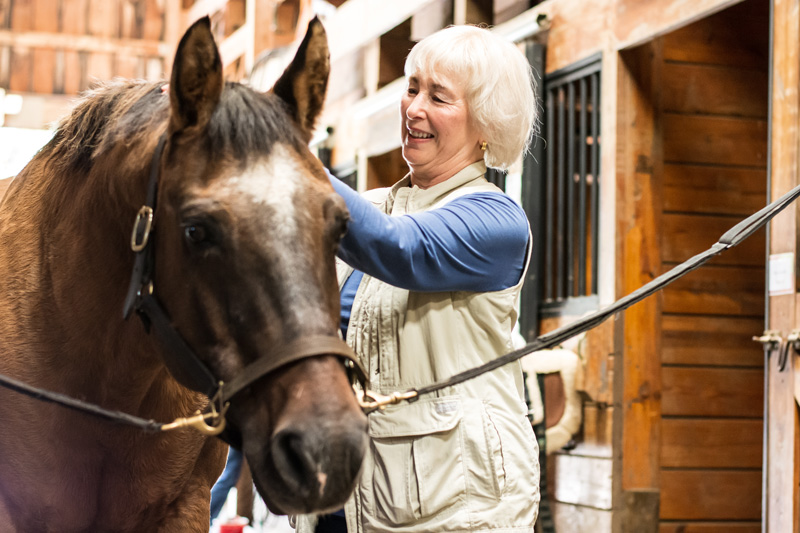Something we prioritize at High Hopes is maintaining happiness among our herd of wonderful horses – after all, we could not do what we do without their partnership.
One of the primary differences between our herd and horses at more typical barns is that our horses interact with MANY more people on a regular basis. At a typical barn, the human interactions are often limited to the barn manager, the instructor, and the owner. At High Hopes, these interactions are naturally amplified due to the work that we do and the way that we do it.

In order to minimize unnecessary/repeated interactions, we try (wherever possible) to employ the following strategies when preparing horses for their lessons:
- Please review the whiteboard and stall cards for information about when horses need to be ready and any specific information about where/how they should be groomed/tacked.
- If the horse’s stall card indicates they are “groom and tack on the crossties only”, please leave them in their stall until 30 minutes before their lesson, at which time they can be brought out onto the crossties. This way, you have 20 minutes to groom/tack and 10 minutes to warm up in hand without a rider in the arena before your class begins. This is preferable to the horse being moved to and from the crossties and stalls multiple times, and potentially, by multiple different people.
- If the horse can be groomed in their stall, of course, that can be done in advance. However, you do not need to pick feet in the stall – this can be done in the aisle (with the hoof pick hanging on the wall) right before the lesson begins. When you have completed grooming, please be sure to put the grooming bucket away on the shelf in the tack room- this will alert other volunteers that the horse was already groomed and is ready to be tacked.
- Please be mindful of your energy when grooming and tacking. Though you are not yet in the arena, the experiences during this process can impact the horse negatively or positively and thus, it will impact the success of the lesson. 20 minutes is plenty to do a thorough groom and careful tack and allows enough time so that you do not need to rush to get everything done.
- Please groom and tack with purpose and patience- this is a great time to check in to see how your horse is feeling that day and to notice any health concerns that can be reported to barn staff! One hint: talking while grooming can distract us from fully attending to the horse. Next time you are here, try grooming while keeping quiet and see how that changes the experience for you and the horse. Remember that horses are often not oral communicators. They talk with their bodies, so lots of extraneous noise can be overwhelming for them.